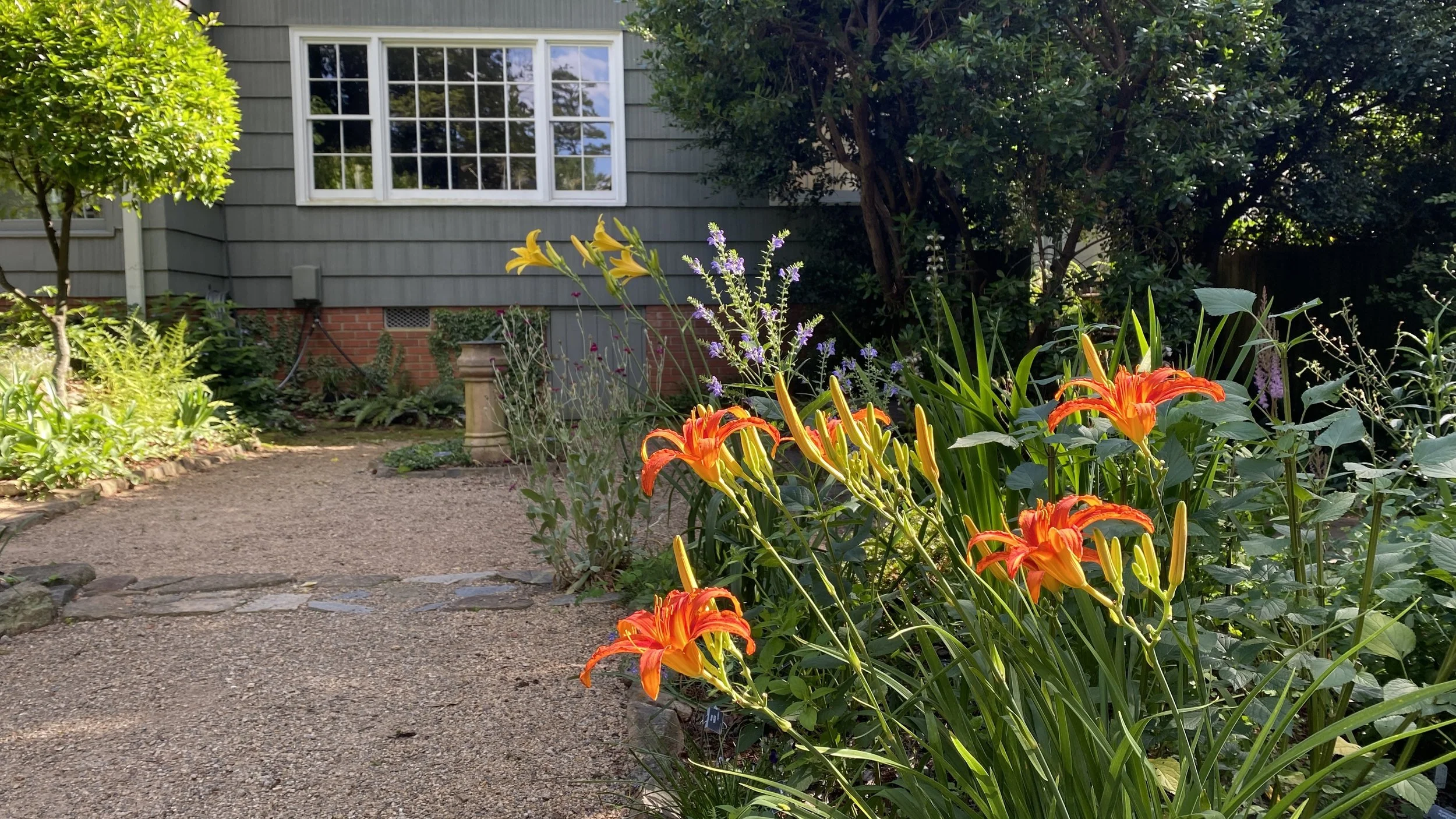This is shaping up to be a good daylily year.
One of Elizabeth Lawrence’s favorite plants was daylilies. She wrote several articles about them for many publications; some have been republished in Through the Garden Gate (1990, UNC Press), A Garden of One’s Own, Writings of Elizabeth Lawrence (1997, UNC Press) and Beautiful at All Seasons, Southern Gardening and Beyond with Elizabeth Lawrence (2007, Duke Univ Press). Even though she wrote that mid-June is considered the height of bloom, it is July for which I wait, when the bulk of her daylilies are in bloom.
Elizabeth recommends fertilizing daylilies just after they bloom. I’m usually not a fan of individually feeding plants, but this year I am following her method. A thin layer of composted cow manure and mushroom compost was applied to the borders in mid-June, and each daylily fed with 15-30-15 as it finished blooming. That should result in healthier plants a decent second bloom in another month or two for those that are remontant.



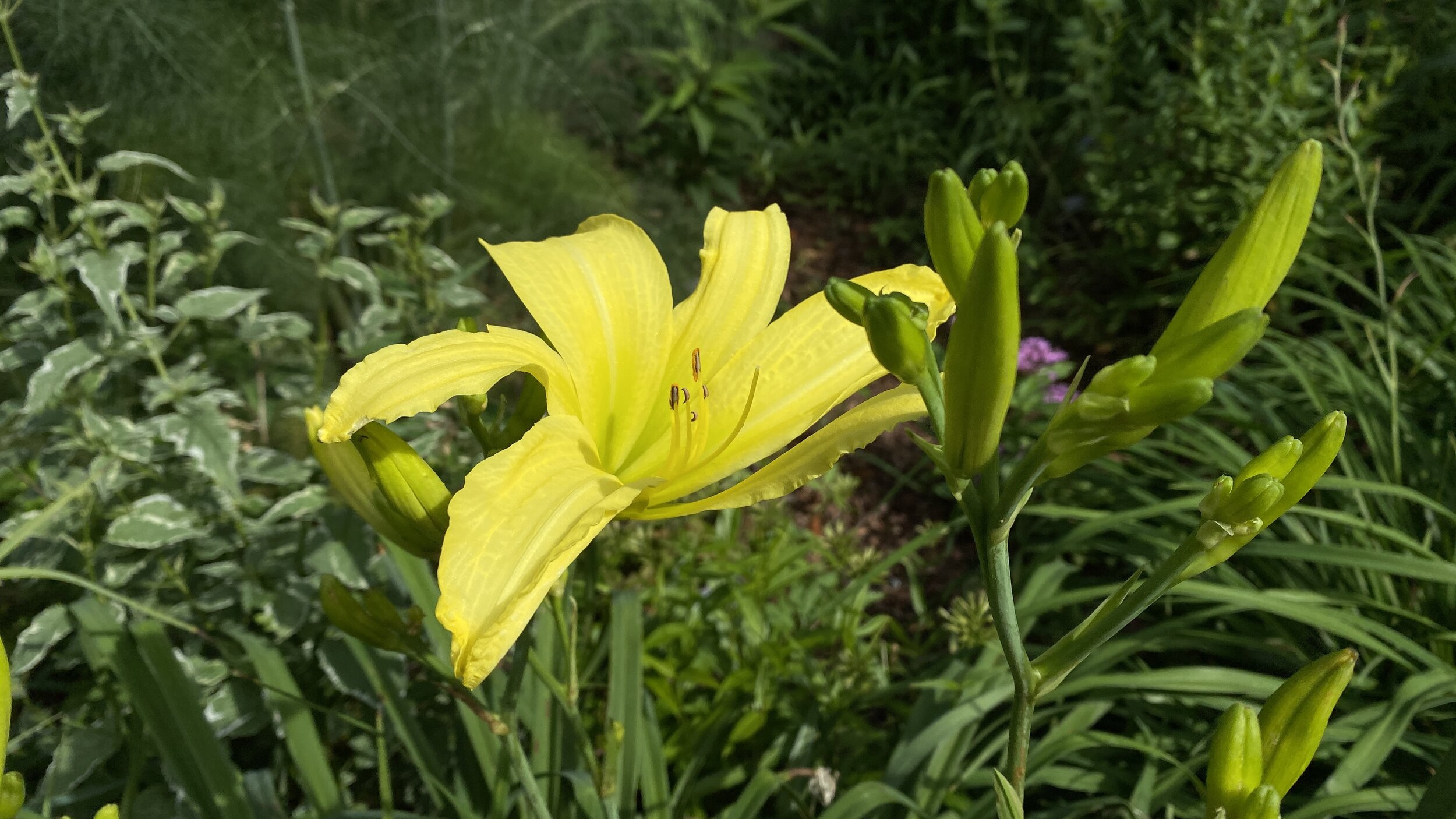
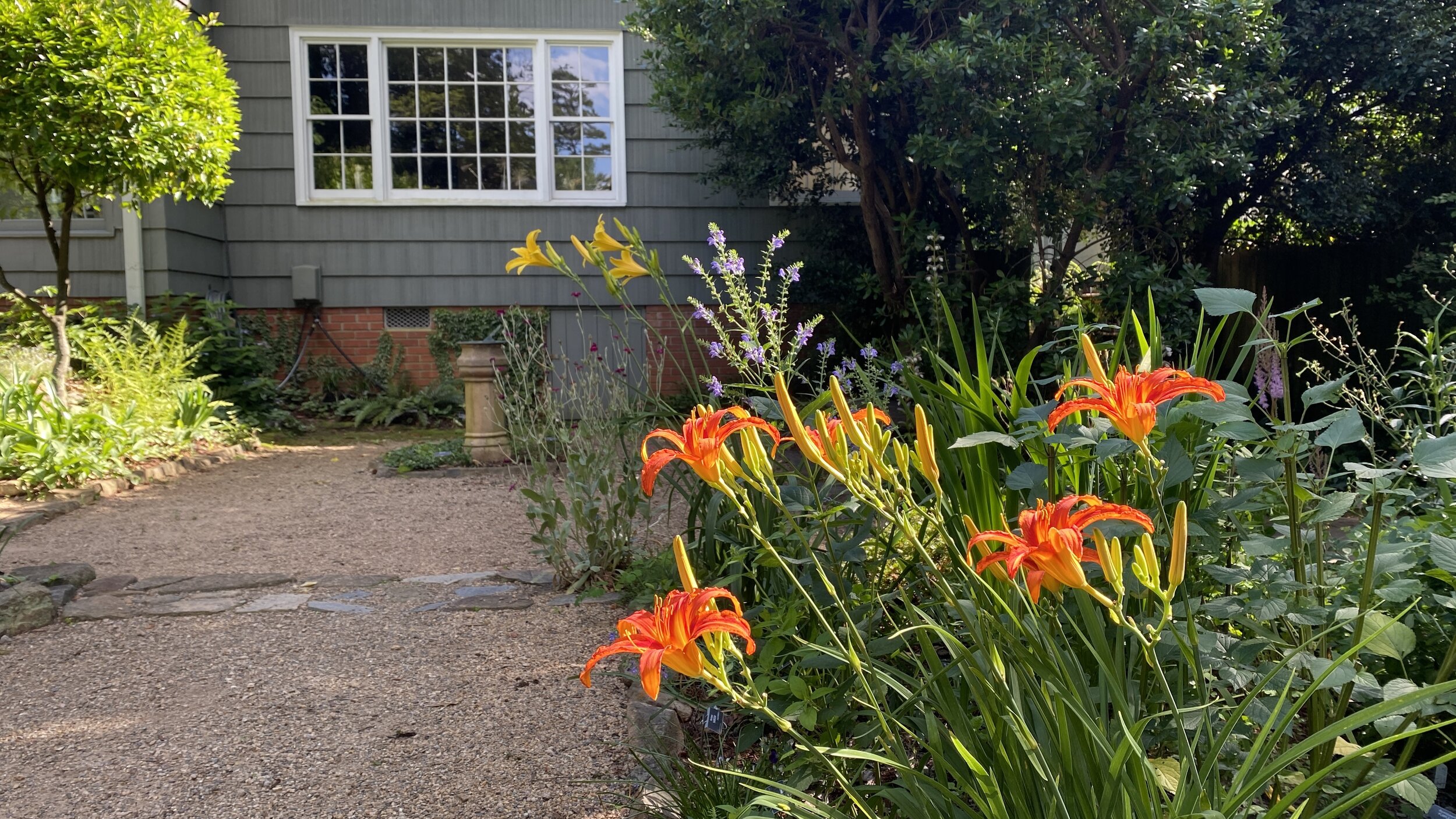




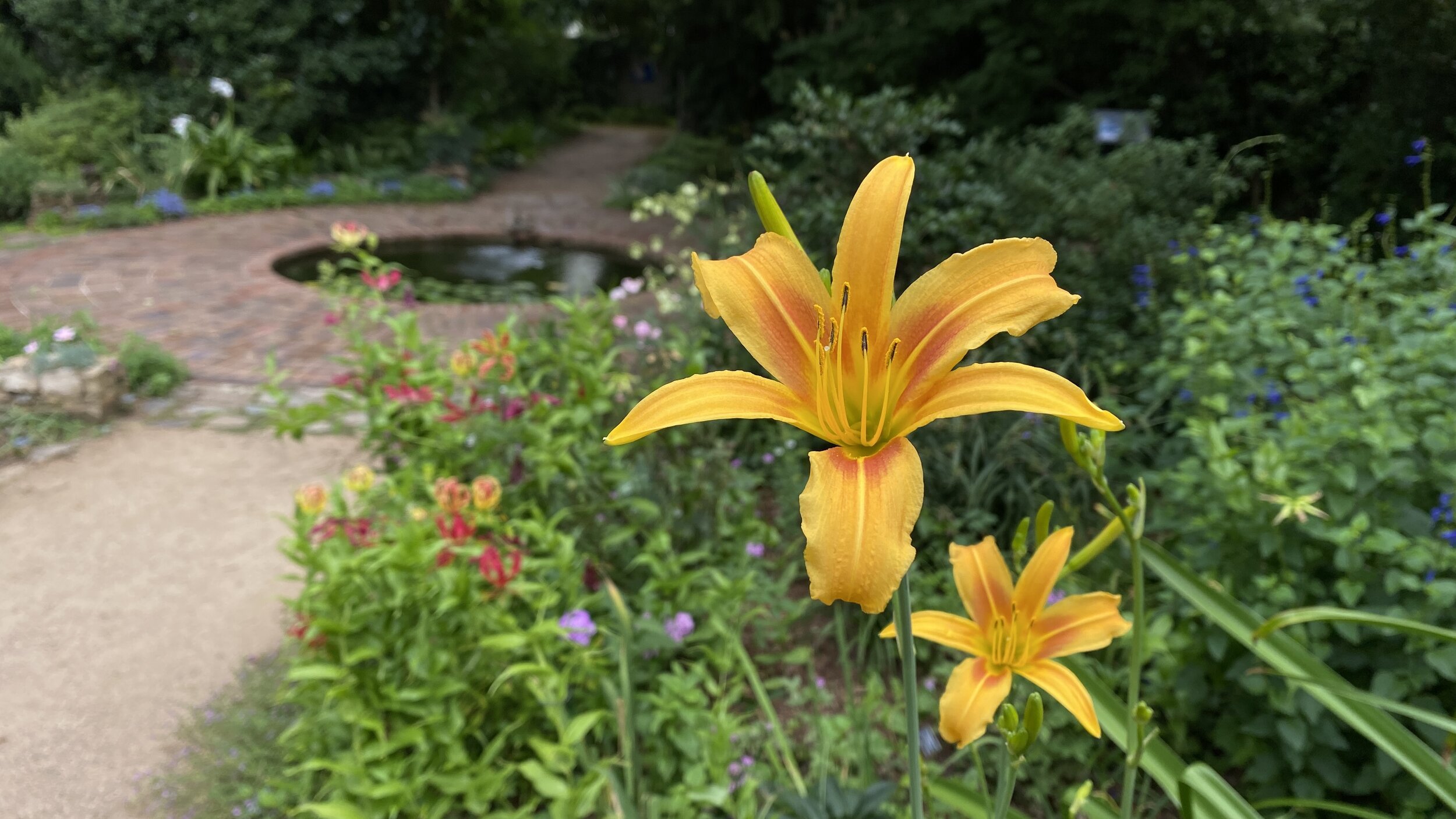
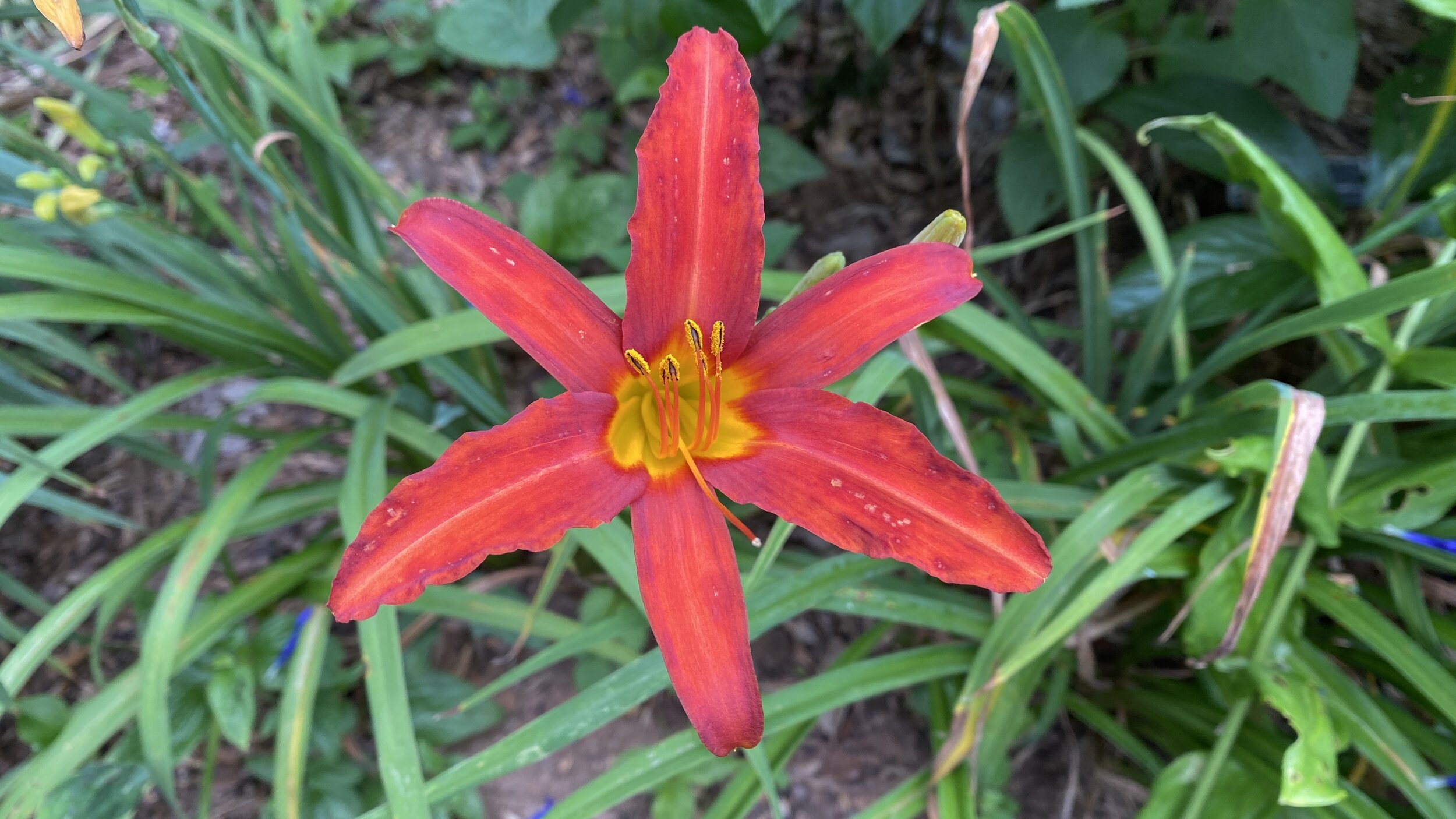
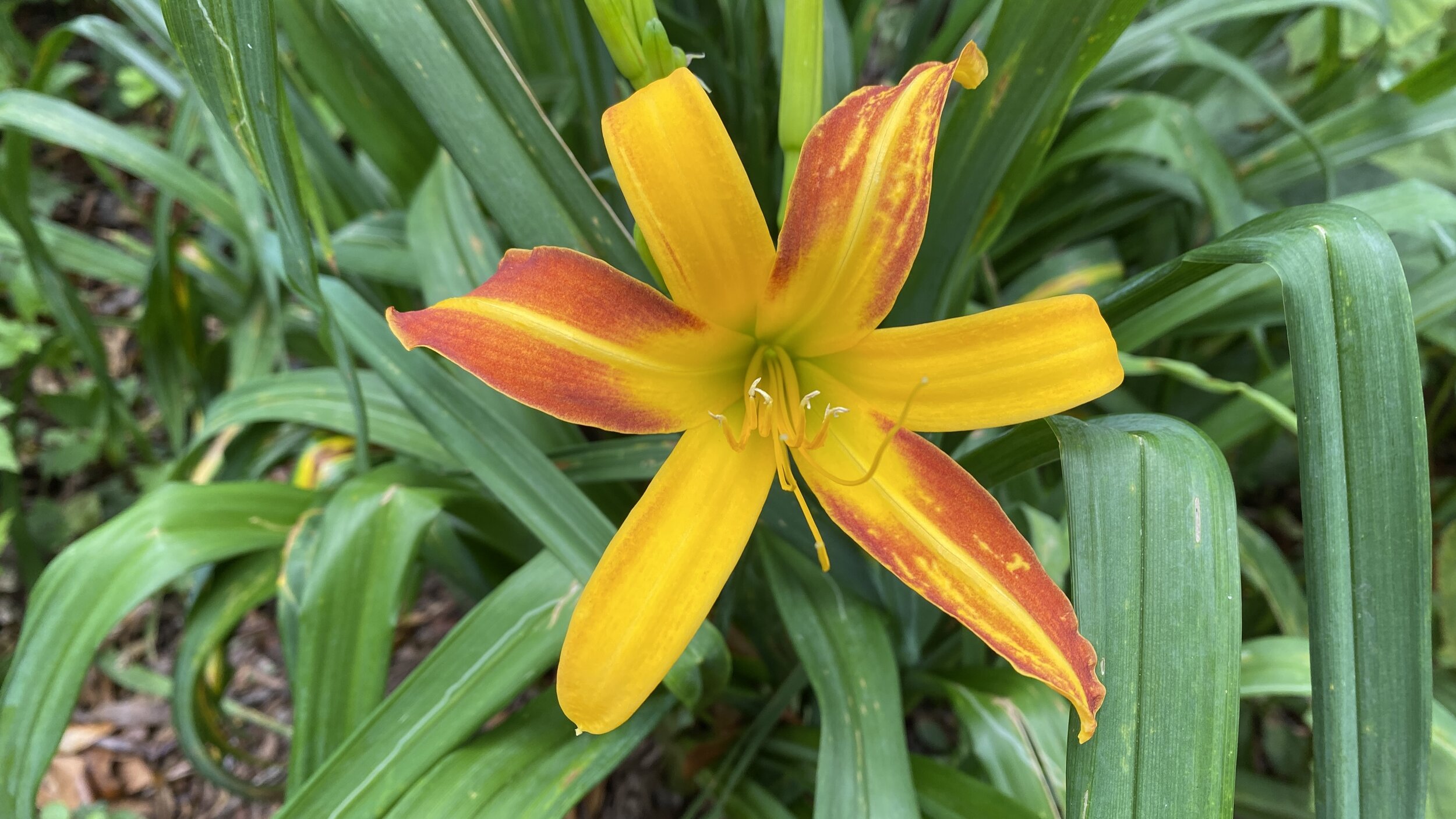
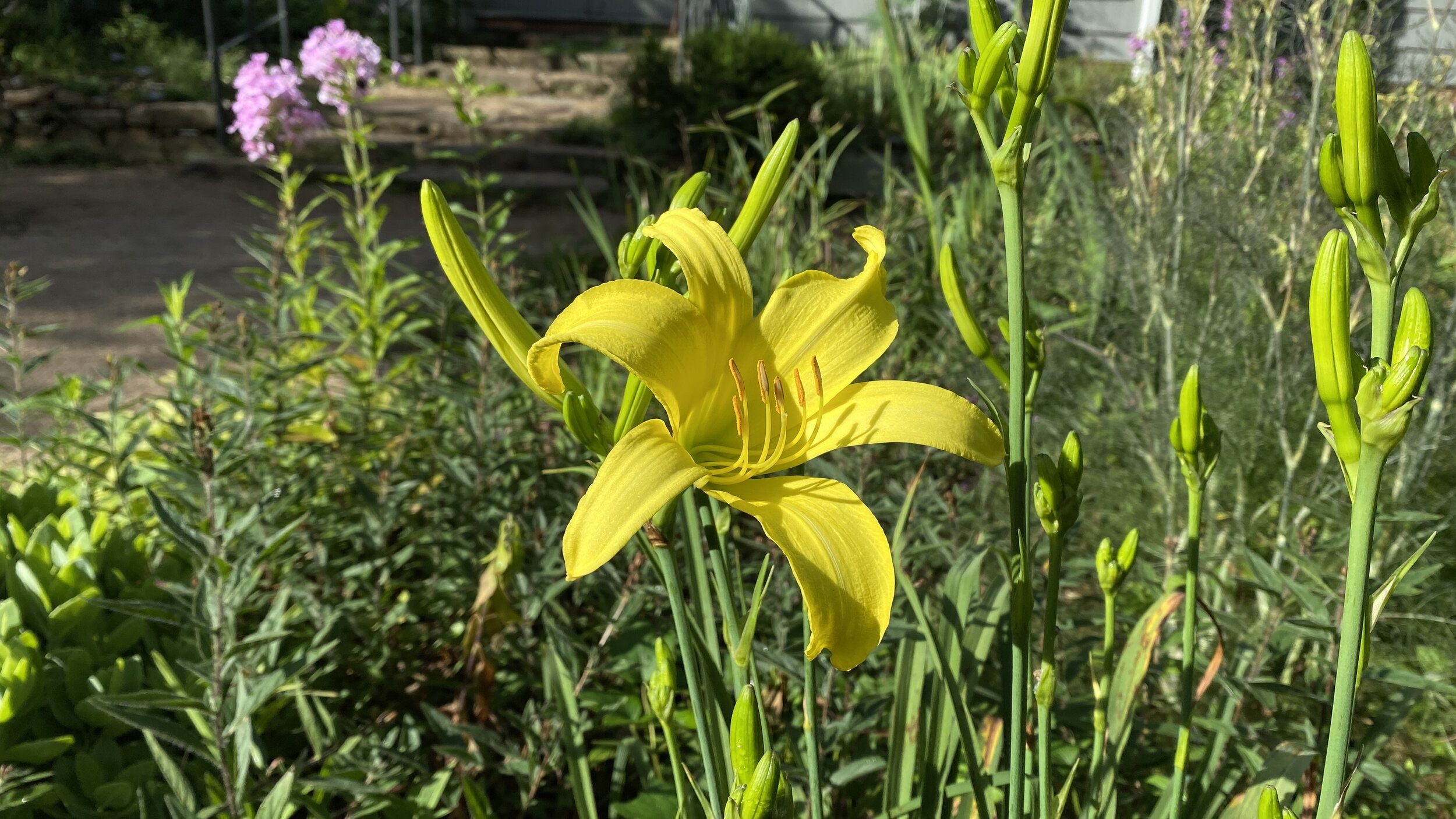
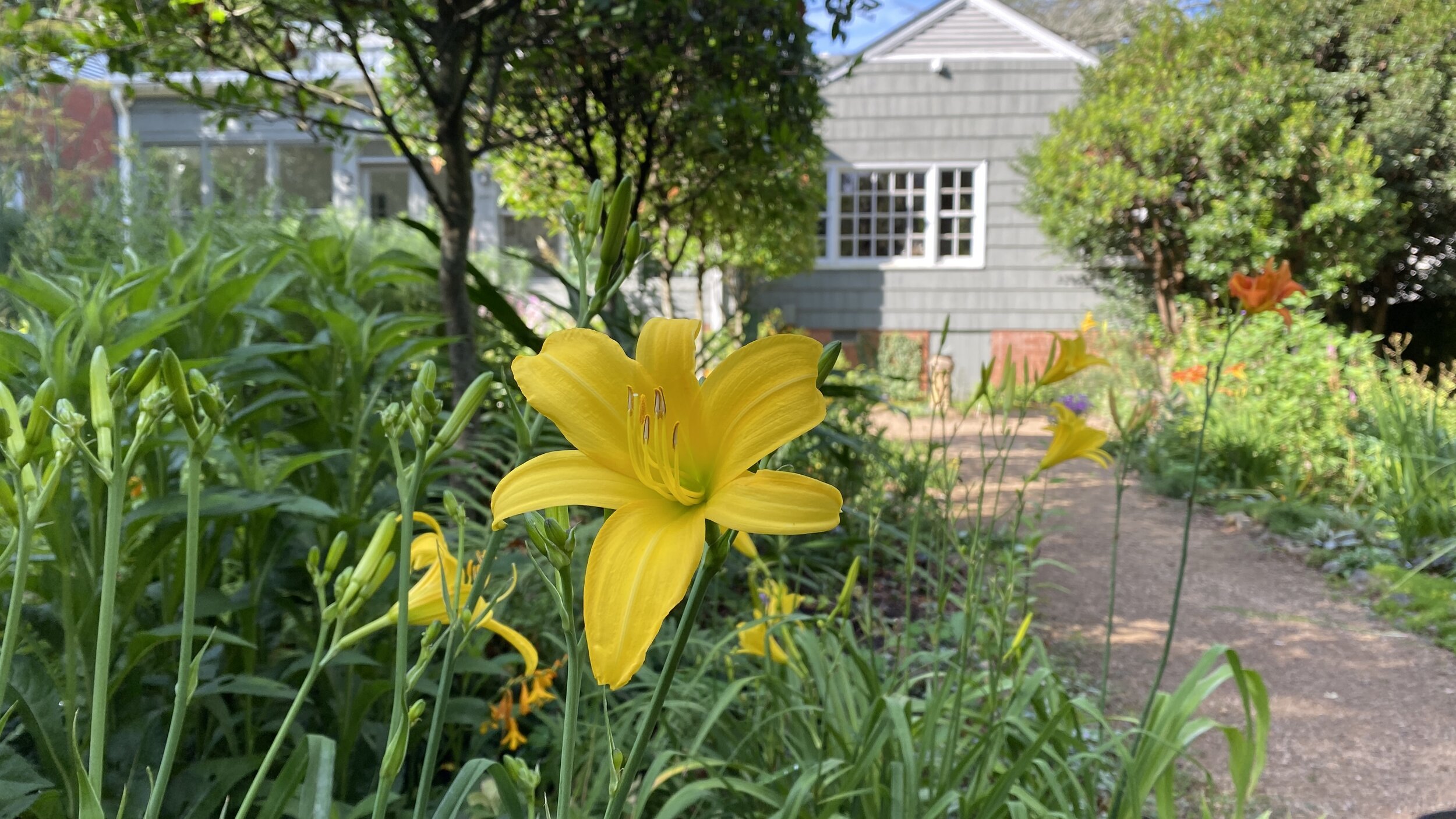

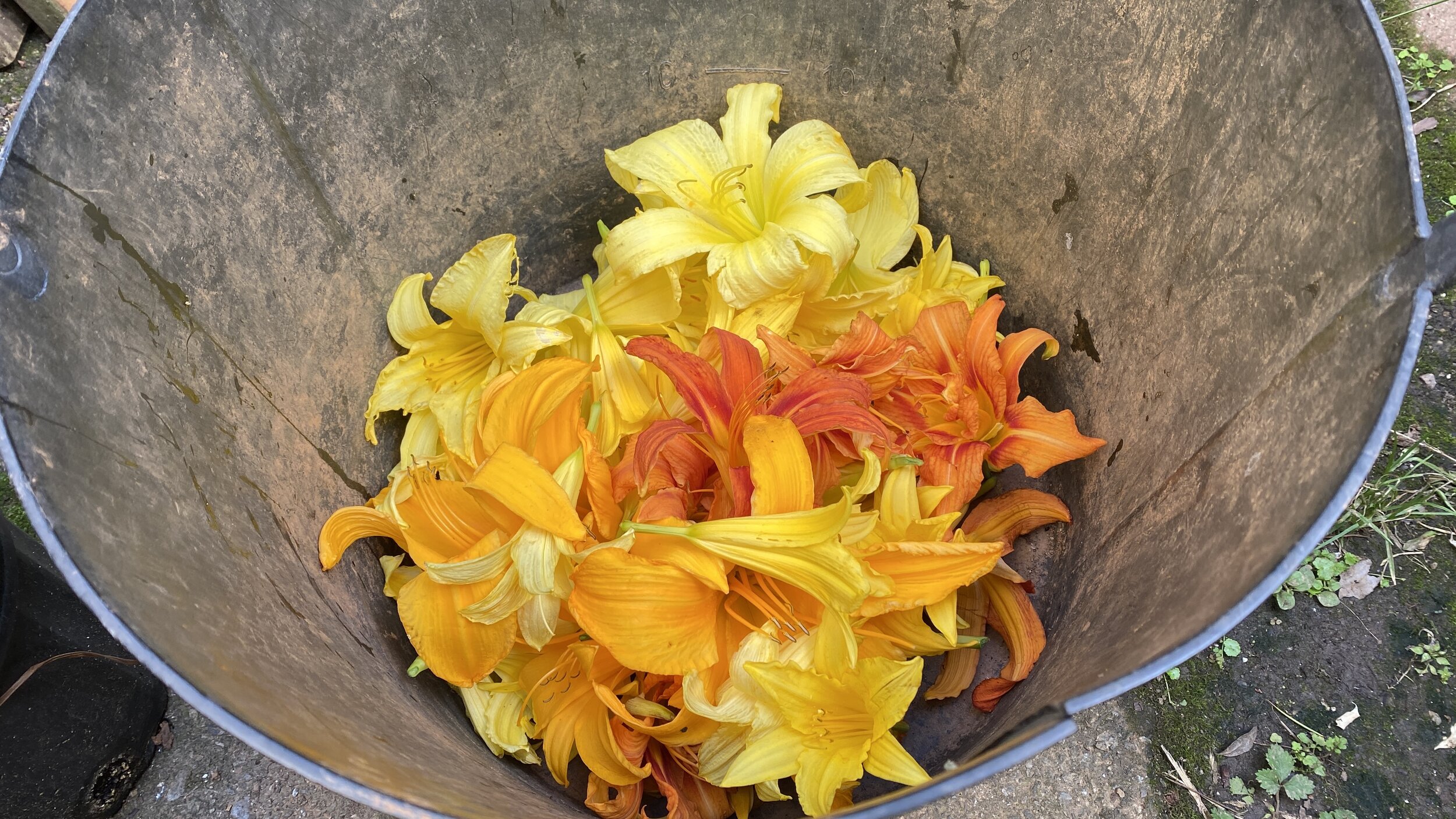
I used to dislike daylilies. Why would anyone want flowers that only open for a day?! Truth be told, I kind of despised daylilies. Little did I know then how much they add to a garden… let alone how long they can bloom. My eyes were opened when we moved to a new-to-us house with several daylilies in an already-established garden. Those first few summers of cheerful flower upon flower intrigued me so much that I eventually joined the Piedmont Daylily Club and the American Daylily Society. I began a collection that would reach 300+ varieties, a few for which I spent far too much money. It’s hard not to get sucked in by the newest and hottest hybrids, or the oohs and ahhs of the crowd, during a frenzied daylily auction at a national meeting. But, hey, it’s all good fun, and you get to support the society in their mission to convert everyone into daylily enthusiasts.
I’ve never been a fan of “chicken fat”—the extra frilly edges—or a lot of crazy markings. More often than not, I have gravitated to star and spider forms, but clear color has always been above all. I even began to hybridize, and now have a handful of seedlings I might register at some point.
Nearly all of that occurred before I stepped into Elizabeth Lawrence’s garden, either in print or in person. Her collection is very different from mine. Elizabeth’s daylilies are subtle. The beauty of the simplicity of the heirloom/historic varieties is calming to me in a way that is difficult to put into words.
As with so many plants, Elizabeth makes me see daylilies in a different light. That thought hit me as I read a passage from her June 26, 1960 article for the Charlotte Observer, “N. C. Society Meets, It Was A Big Day For Hemerocallis:”
As I listened to the comments of the connoisseurs, I realized that my conception of a good daylily is all wrong.
Thankfully, she didn’t take their comments too much to heart, as many of the daylilies that still sparkle in her garden each summer were planted prior to that meeting.
Now if I could just get all their names right!

